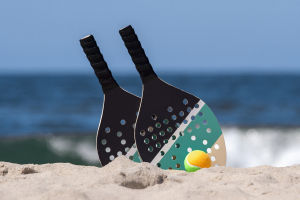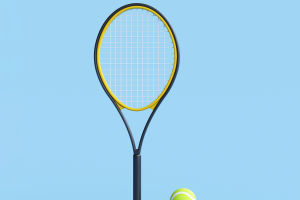Hello, Lykkers! Ever been excited to hit the tennis courts but found yourself staring at a wall of rackets, unsure of where to begin?
Choosing the right tennis racket can seem overwhelming, but it doesn’t have to be.
A well-chosen racket not only enhances your performance but also ensures you enjoy every moment on the court. From weight to grip size, each factor plays a role in how well the racket suits your style. So, how do you select the perfect one? Let’s break it down step by step.
Understanding Racket Weight
The weight of a tennis racket is one of the most important factors to consider. Heavier rackets provide more power and stability, making them ideal for players who prefer strong, powerful shots. These rackets allow for better control during a match, especially when playing against fast serves or returns. However, they require more strength and can tire the arm over extended play.
On the other hand, lighter rackets are easier to swing, allowing for quicker reactions and improved maneuverability. These are often favored by players who rely on speed and agility, enabling them to react swiftly to volleys and groundstrokes. For those just starting out or players focusing on technique, a lighter racket offers comfort without sacrificing too much power.
Head Size: Power or Precision?
Next, consider the racket's head size. Larger head sizes generally provide a bigger ''sweet spot,'' which makes it easier to connect with the ball and generate power. This is ideal for players who prefer a more forgiving racket, allowing for more powerful shots with less precision.
Smaller head sizes, however, offer more control and accuracy. If you’re someone who enjoys placing the ball exactly where you want on the court, a smaller head size might be the better option. It requires more precision but rewards you with enhanced control over your shots. Choosing between power and precision often depends on your playing style and experience level.
Balance and Swing Weight
Balance refers to how the racket’s weight is distributed. A racket that is head-heavy provides more power, as most of the weight is concentrated at the top. This type of racket suits players looking for strong, impactful shots, but it may be harder to control on finesse shots.
A head-light racket, on the other hand, offers greater maneuverability and control, allowing for faster swings and better handling during volleys or quick exchanges at the net. Players who like to play a more tactical game or prefer aggressive net play often gravitate toward head-light rackets.
Grip Size: Comfort is Key
One factor that can't be overlooked is grip size. A grip that's too large or too small can hinder your performance and cause discomfort or even injury. Too large of a grip makes it difficult to maneuver the racket, while too small of a grip may cause strain in your hand or wrist. To find the perfect grip size, try holding the racket as if shaking hands with it—there should be just enough room to fit a finger between your fingers and palm.
Material and String Patterns
Modern tennis rackets are made from various materials, including graphite, aluminum, or a combination of both. Graphite rackets are lighter and more durable, offering better control and power, making them popular among advanced players. Aluminum rackets, while heavier, are more affordable and suitable for beginners.
String patterns also influence how a racket performs. Open string patterns generate more spin, making it easier to add topspin or slice to the ball. Denser string patterns provide more control and durability, helping players who prioritize precision and longer-lasting string tension.
Making the Final Decision
Dear Lykkers, selecting the right tennis racket is a personal journey, influenced by your playing style, preferences, and comfort. The perfect racket enhances your game and brings joy to every swing. Whether you're after power, precision, or comfort, taking the time to understand these key features will lead you to a racket that feels just right.
Stepping onto the court with a racket that fits perfectly in your hand brings confidence and excitement to your game. Here's to finding the one that lets you play your best while enjoying every moment under the sun!


